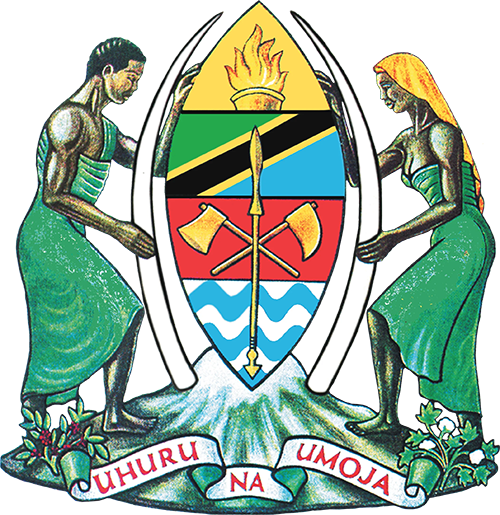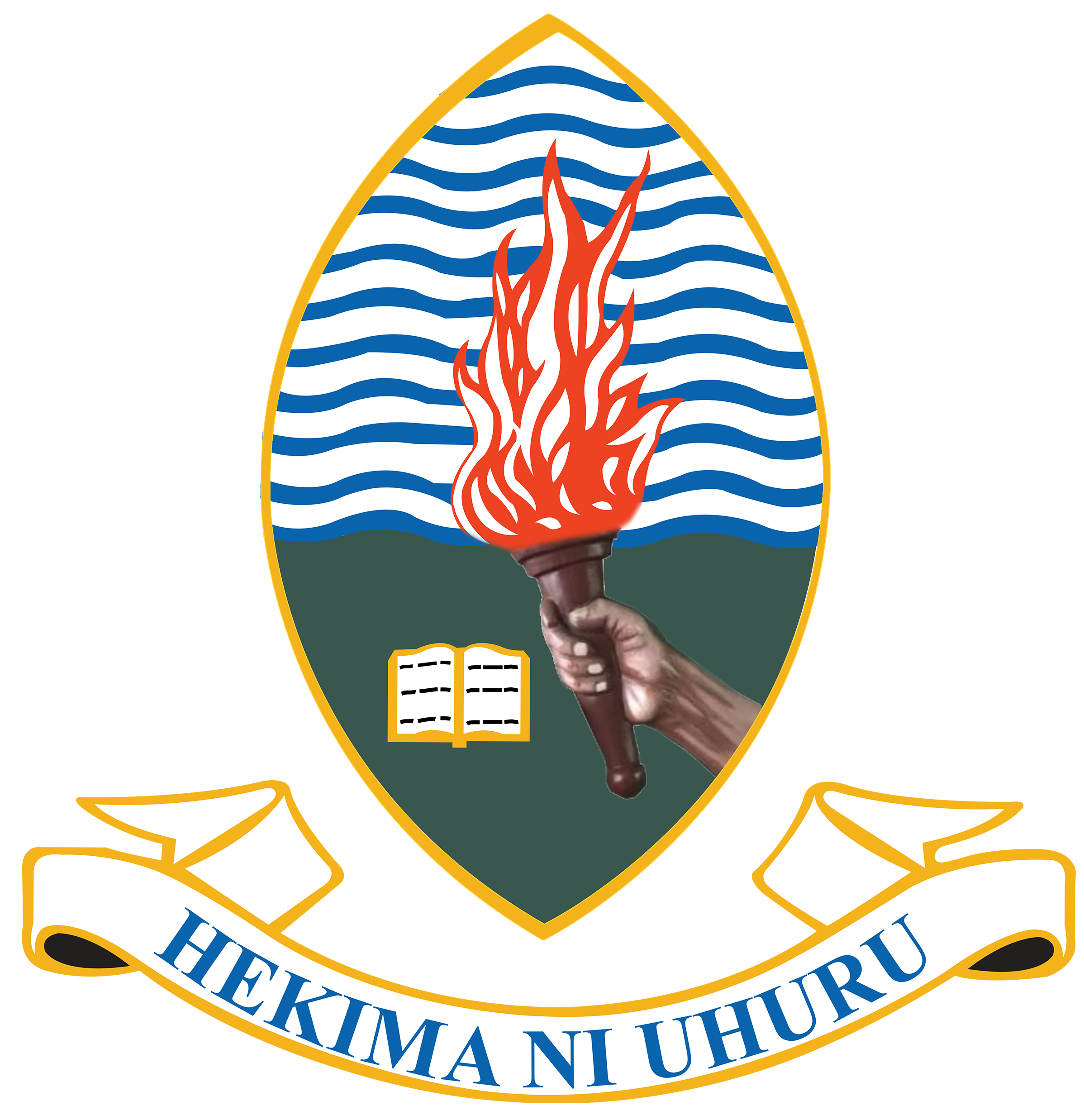
Biography
Prof. Deogratias M.M. Mulungu is an Associate Professor, researcher and consultant employed at the University of Dar es Salaam since 2003. He is Professional member of the Engineers Registration Board (ERB) of Tanzania. He lectures various courses on open channel hydraulics, computations in water resources engineering, principles of hydrology, hydrological processes, hydrological modelling, surface water hydrology and Integrated Water Resources Management (IWRM). He has conducted various research and studies in the area of climate change, water resources management, hydrological modelling and sanitation. Moreover, Prof. Mulungu has served in different tasks and the National special committees under the National Audit Office and the Ministry of Water Tanzania. Moreover, he is a member of regional professional networks such as SADC Waternet and NBCBN Foundation. He is a member of regional networks such as Global Environmental Change consortium under the International Council for Science Regional Office for Africa (ICSU ROA), Climate Change Collaborative Working Group under the African Research Universities Alliance (ARUA), Nile Basin Capacity Building Network (NBCBN), Nile FRIEND (Flow Regimes from International Experimental and Network Data), SADC WaterNet, UNDP CapNet and IWRM-Net.
Research Interest
- Artificial Intelligence (AI) applications in water resources;
- Hydrological modeling;
- Soil-Vegetation-Atmosphere-Transfer schemes;
- Climate change and impact studies;
- Extremes (Drought & floods) management;
- Agricultural water management;
- Numerical and hydraulic modeling;
- Lakes and rivers hydrology;
- Applications of Remote Sensing & GIS in Water resources;
- Land use and cover changes impact studies.
Contacts
Email:
Projects
He developed a water allocation models for the following basins: Wami River subbasin under the FAO project, Great Ruaha River subbasin under the RESBEN (Unlocking Resilient Benefits from African Water Resources. A Case of Great Ruaha River Basin Tanzania) project. He was the secretary and participated in the development of Design manuals for the Ministry of Water in Tanzania. He has participated in the development of Integrated Water Resources Management and Development Plan for the Lake Victoria Basin in Tanzania as an expert in Hydrological Modelling component, which is a funded project by the Ministry of Water. He participated in the concluded International RESBEN project under African Research Universities Alliance (ARUA), which guides equitable and sustainable water resources allocation and management in the Great Ruaha River catchment. He is currently participating in and supervising the International “Interdisciplinary Assessment of Agricultural Water Resilience under Climate Change in the Kagera Sub-basin-InARK” project under the Water Transformation Pathways Planning Project (Trans-Path-Plan) of the NBCBN-Foundation and partners as a postdoctoral project supervisor to fostering learning about, and support the further development of policy, analysis tools and planning approaches and concepts to support a pro-active, adaptive, joint management of transformation pathways for water management in case studies from selected countries of the Nile basin that focus on climate change and water scarcity. Also, he is currently leading the National Climate Change Research in Tanzania project “Promoting Adaptive Management for Agricultural Water to Enhance Community Resilience under Climate Change in the Kagera River Sub-basin”, which is funded by COSTECH. The project aims at formulating sound recommendations for agricultural water management and climate change adaptation by combining natural and social-economic science insights, which is crucial for food security and for enhancement of community resilience in the sub-basin.
Publications
3. PUBLICATIONS
3.1 BOOKS AND BOOK CHAPTERS
3.1.1 Mulungu, D.M.M. and Taipe, C.L.R. (2012). Water evaluation and planning in Wami River Basin: Application of the WEAP model. Chapter 2: Water evaluation and planning in the Wami River Basin: Application of the WEAP model. In: Bioenergy and Food Security, the BEFS Analysis for Tanzania. Sunflower Biodiesel, Water, and Household Food Security (2012). Edited By E. Beall, FAO 54, ISSN 2226-6062, ISBN 978-92-5-107333-9.
3.1.2 The 4th Edition Design, Construction Supervision, Operation and Maintenance (DCOM) Manual (2020) in Four Volumes Published by Mkuki na Nyota Publishers Limited:
DCOM Volume I: Design of Water Supply Projects (ISBN 978-9987-084-32-6);
DCOM Volume II: Design of Sanitation Projects (ISBN 978-9987-084-33-3);
DCOM Volume III: Construction Supervision for Water Supply and Sanitation Projects (ISBN 978-9987-084- 34-0);
DCOM Volume IV: Operation and Maintenance for Water Supply and Sanitation Projects (ISBN 978-9987-084-35-7).
(Partly accessible at: www.design.maji.go.tz), Ministry of Water, Tanzania.
3.1.3 D. K. Hlanze, D. M. M. Mulungu, P. Ndomba, S. Tfwala, S. Mabaso, W. M. Dlamini, W. Gumindoga, Rajib Mitra, and Jayanta Das (2023). Chapter Three: Estimating Soil Loss Rate and Sediment Yield of the Proposed Ngololweni Earth Dam, Kingdom of Eswatini, Pages 33-64. Monitoring and Managing Multi-hazards. A Multidisciplinary Approach ISBN: 978-3-031-15376-1; ISBN 978-3-031-15377-8 (eBook). https://doi.org/10.1007/978-3-031-15377-8. Springer Nature Switzerland AG
3.2 PEER REVIEWED INTERNATIONAL JOURNALS
3.2.1 Anna Mremi, Richard Kimwaga, Deogratias M. M. Mulungu & Fides J. Izdori (2025) Spatial and temporal rainfall variability impacts on faecal sludge management services in Sinza River Catchment at Tandale Ward in Dar es Salaam, Tanzania. Geomatics, Natural Hazards and Risk, 16:1, 2462175, https://doi.org/10.1080/19475705.2025.2462175.
3.2.2 A. Mremi, R. Kimwaga, D.M.M. Mulungu, F.J. Izdori (2025). Climate Variability Impacts on Sanitation Services in an Informal Urban Settlement of Tandale Ward in Dar es Salaam Tanzania., HELIYON, https://doi.org/10.1016/j.heliyon.2025.e42686
3.2.3 Nickson Tibangayuka, Deogratias M.M. Mulungu, Fides Izdori (2025). Assessing rainfall variability, long‑term trends, and drought incidences in the Tanzania part of the Kagera River sub‑basin. Earth Science Informatics, 18:184, https://doi.org/10.1007/s12145-025-01699-y.
3.2.4 Nickson Tibangayuka, Deogratias M.M. Mulungu, Fides Izdori (2024). Future Changes in Climate Extremes: Insights from CMIP6 Model Simulations for the Kagera River Sub-basin, Tanzania. Earth Systems and Environment, https://doi.org/10.1007/s41748-024-00519-5
3.2.5 Nickson Tibangayuka, Deogratias M.M. Mulungu, Fides Izdori (2024). Analysis of spatiotemporal surface water variability and drought conditions using remote sensing indices in the Kagera River Sub-Basin, Tanzania. Remote Sensing Applications: Society and Environment, Volume 37. https://doi.org/10.1016/j.rsase.2024.101405
3.2.6 Twaha, R., Nobert, J., Alexander, A.C., Mulungu, D.M.M. and Senga, M. (2024). Delineating groundwater potential zones with GIS and analytic hierarchy process techniques: the case of Great Ruaha River catchment, Tanzania. Hydrogeology Journal. https://doi.org/10.1007/s10040-024-02769-z
3.2.7 Hersi, N.A.M., Mulungu, D.M.M. & Nobert, J. (2024). Spatio-temporal prediction of land use and land cover change in Bahi (Manyoni) Catchment, Tanzania, using multilayer perceptron neural network and cellular automata-Markov chain model. Environmental Monitoring and Assessment 196(29), https://doi.org/10.1007/s10661-023-12201-w
3.2.8 Mollel, G.R., Mulungu, D.M.M., Nobert, J. and Alexander, A.C. (2023). Assessment of Climate Change Impacts on Hydrological Processes in the Usangu catchment of Tanzania under CMIP6 Scenarios. Journal of Water and Climate Change 14(11): 4162-4182 DOI: 10.2166/wcc.2023.542.
3.2.9 Musa W. Lowot, Augustina C. Alexander and Deogratias M. M. Mulungu (2023). Assessment of Spatial Variability of Groundwater Levels in Moroto District, Uganda; Tanzania Journal of Engineering and Technology 2(2):1-9.
https://doi.org/10.52339/t jet.v42i2.752.
3.2.10 Naima A.M. Hersi, Deogratias M.M. Mulungu, Joel Nobert (2023). Groundwater recharge estimation under changing climate and land use scenarios in a data-scarce Bahi (Manyoni) catchment in internal drainage basin (IDB), Tanzania using soil and water assessment tool (SWAT). Groundwater for Sustainable Development, Volume 22. https://doi.org/10.1016/j.gsd.2023.100957.
3.2.11 Naima A.M. Hersi, Deogratias M.M. Mulungu, Joel Nobert (2023). Prediction of future climate in semi-arid catchment under CMIP6 scenarios: A case study of Bahi (Manyoni) catchment in Internal Drainage basin (IDB), Tanzania; Physics and Chemistry of the Earth Volume 129. https://doi.org/10.1016/j.pce.2022.103309.
3.2.12 Nickson Tibangayuka, Deogratias M.M. Mulungu, Fides Izdori (2022). Performance evaluation, sensitivity, and uncertainty analysis of HBV model in Wami Ruvu basin, Tanzania. Journal of Hydrology: Regional Studies, Volume 44. https://doi.org/10.1016/j.ejrh.2022.101266
3.2.13 Fides Izdori, Augustina C. Alexander, Deogratias M. M. Mulungu, Lucius Mugisha (2022). Assessing Morphological Changes of the Msimbazi River Using Satellite Images. Tanzania Journal of Engineering and Technology, 41(4): 15–23. https://doi.org/10.52339/tjet.v41i4.871
3.2.14 Mulungu, D.M.M. and Mukama, E. (2022). Evaluation and Modelling of Accuracy of Satellite-based CHIRPS Rainfall data in Ruvu Sub-basin, Tanzania. Modeling Earth Systems and Environment Journal, 9: 1287–1300. https://doi.org/10.1007/s40808-022-01555-8
3.2.15 Tibangayuka, N., Mulungu, D.M.M. and Izdori, F. (2022). Evaluating the performance of HBV, HEC-HMS and ANN models in simulating streamflow for a data scarce high-humid tropical catchment in Tanzania. Hydrological Sciences Journal, 67(14): 2191-2204. https://doi.org/10.1080/02626667.2022.2137417
3.2.16 Tibangayuka, N., Mulungu, D.M.M. and Izdori, F. (2022). Assessing the potential impacts of climate change on streamflow in the data scarce Upper Ruvu River watershed, Tanzania. Journal of Water and Climate Change 13 (9): 3496–3513. https://doi.org/10.2166/wcc.2022.208
3.2.17 Msovu, U.E., Mulungu, D.M.M., Nobert, J., Valimba, P. and Mahoo, H. (2020). Spatial and Temporal Variation of Rainfall and Streamflow in the Kikuletwa Catchment of Upper Pangani Basin, Tanzania. Tanzania Journal of Engineering and Technology (TJET) 39(1): 84-103.
3.2.18 Phiri, T.L.C. and Mulungu, D.M.M. (2021). Simulation modelling for integration of hydropower, irrigation water and water supply potentials of Lweya Basin, Malawi. International Journal of River Basin Management 19(4): 413-427. https://doi.org/10.1080/15715124.2019.1683854.
3.2.19 Msovu, U.E., Mulungu, D.M.M., Nobert, J. and Mahoo, H. (2019). Land Use/Cover change and their impacts on streamflow in Kikuletwa catchment of Pangani River Basin, Tanzania. Tanzania Journal of Engineering and Technology (TJET) 38(2): 171-191.
3.2.20 Gervas, R., Mulungu, D.M.M. and Nobert, J.K. (2019). Assessment of surface water resources in Great Ruaha River sub-basin Tanzania: Application of WEAP model for water allocation and utilization impacts analysis. Tanzania Journal of Engineering and Technology 38 (1): 27-46.
3.2.21 Juma, M. and Mulungu, D.M.M. (2018). Analysis of droughts using meteorological and microwave remote sensed data. A case of Wami watershed Tanzania. Tanzania Journal of Engineering and Technology 37 (2): 107-124.
3.2.22 Kangume, C. and Mulungu, D.M.M. (2018). Assessing the impacts of climate change on streamflow in Malaba River catchment, Uganda. PAUWES Research-2-Practice Forum 2018.SSRN: https://ssrn.com/abstract=3210592 or http://dx.doi.org/10.2139/ssrn.3210592
3.2.23 Dismas, J., Mulungu, D.M.M. and Mtalo, F.W. (2018). Advancing rainwater harvesting as strategy to improve water access in Kinondoni Municipality Tanzania. Water Science and Technology: Water Supply Journal 18(3): 745-753. DOI: 10.2166/ws.2018.007
3.2.24 Kamwaga, S., Mulungu, D.M.M. and Valimba, P. (2018). Assessment of empirical and regression methods for infilling missing streamflow data in Little Ruaha catchment. Journal of Physics and Chemistry of the Earth (JPCE) 106: 17-28. https://doi.org/10.1016/j.pce.2018.05.008
3.2.25 Maliehe, M. and Mulungu, D.M.M. (2017). Assessment of water availability for competing uses in South Phuthiatsana catchment, Lesotho using SWAT and WEAP. Journal of Physics and Chemistry of the Earth (JPCE) 100: 305-316. DOI: 10.1016/j.pce.2017.02.014
3.2.26 Rotich, S.C. and Mulungu, D.M.M. (2017). Adaptation to climate change impacts on crop water requirements in Kikafu catchment Tanzania. Journal of Water and Climate Change 8 (2): 274-292. DOI: 10.2166/wcc.2017.058
3.2.27 Gulacha, M.M. and Mulungu, D.M.M. (2017). Generation of climate change scenarios for precipitation and temperature at local scales using SDSM in Wami-Ruvu River basin Tanzania. Journal of Physics and Chemistry of the Earth (JPCE) 100: 62-72. DOI:10.1016/j.pce.2016.10.003
3.2.28 Fundisha, E., Rugumamu, W. and Mulungu, D.M.M. (2016). Assessment of traditional environmental knowledge systems applied to rainfall forecasting in Rombo district, Tanzania. Journal of Global Resources 3: 111-121. https://www.isdesr.org/current-issue-volume-3-july-2016/
3.2.29 Ndunguru, T.W. and Mulungu, D.M.M. (2015). Analysis of institutional arrangement for greywater management in unplanned settlements of Kinondoni municipality Tanzania. Journal of Water, Sanitation and Hygiene for Development, International Water Association (IWA) Publishing (UK), 5(4): 594-607. DOI: https://doi.org/10.2166/washdev.2015.057
3.2.30 Gervas, R., Mulungu, D.M.M. and Nobert, J. (2015). Assessment of surface water resources in Great Ruaha River sub-basin Tanzania: Estimation of current and future water demands and availability. A paper submitted to the International Journal of River Basin Management. Manuscript ID: JRBM-2015-0018
3.2.31 Mulungu, D.M.M and Kashaigili, J.J. (2012). Dynamics of landuse and land cover changes and implications on river flows in Simiyu River catchment, Lake Victoria Basin in Tanzania. The Nile Basin Water Science & Engineering Journal, 5(2): 23-35.
3.2.32 Munyaneza, O., Ndayisaba, C., Wali, U.G., Mulungu, D.M.M. and Dulo, S.O. (2011). Integrated flood and drought management for sustainable development in the Kagera River Basin. The Nile Basin Water Science and Engineering Journal 4(1): 60-70.
3.2.33 Mulungu, D.M.M., Ng’ondya, R. and Mtalo, F.W. (2007). Nyumba ya Mungu Reservoir System Simulation by using HEC-ResSim Model. Tanzania Journal of Engineering and Technology 1(3): 46-57.
- Mulungu, D.M.M. and Munishi, S.E. (2007). Simiyu River catchment parameterization using SWAT model. Journal of Physics and Chemistry of the Earth 32: 1032-1039.
- Mtalo, F.W., Mkhandi, S., Mwanuzi, F., Mulungu, D.M.M. and Burgess, N. (2005). Is the amount of water flowing from the Eastern Arc Mountains decreasing or increasing. The Arc Journal, Special Issue on Eastern Arc Mountains Monitoring Baselines. Tanzania Forest Conservation Group. Issue 19: 6-7.
- Mulungu, D.M.M., Ichikawa, Y. and Shiiba, M. (2005). A physically based Distributed Subsurface-surface Flow Dynamics Model (DSFDM) for forested mountainous catchments. Hydrological Processes Journal 19(20): 3999 – 4022. ISSN 0885 – 6087.
- Mulungu, D.M.M. and Mashauri, D.A. (2004). Resolving and prevention of shared water resources conflicts. A Journal of Civil Engineering Research and Practice 1(1): 51-62 ISSN 1729 - 5769.
- Mulungu, D., Shiiba, M. and Ichikawa, Y. (2002). Comparison of forest canopy interception models combined with Penman-Monteith equation. Journal of Japan Society of Hydrology and Water Resources 15(6): 555-568.
- Rubaratuka, I.A. and Mulungu, D.M.M. (2001). Defects in reinforced concrete due to environmental conditions and concrete treatment: A case study at the University of Dar es Salaam. Uhandisi Journal, Tanzania 24(1): 91-98. ISSN 0856-3152.
- Mashauri, D.A., Mulungu, D.M.M. and Abdulhussein, B.S. (2000). Constructed Wetland at the University of Dar es Salaam. Water Research. A Journal of the International Water Association 34(4): 1135-1144.



